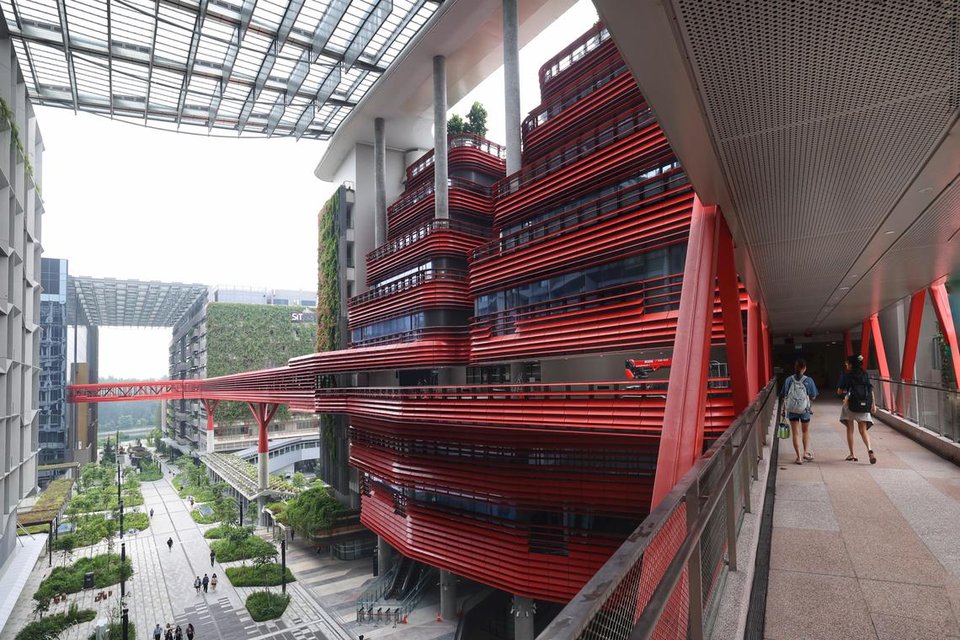SIT’s Punggol campus to become full-scale living lab with new digital network by end 2025

(Photo credit: LIANHE ZAOBAO)
Source: The Straits Times
The Singapore Institute of Technology (SIT) will transform its Punggol campus into a full-scale living lab by the end of 2025 through a campus-wide digital infrastructure called the Living Lab Network.
This system will provide students and companies with real-time access to operational campus data for learning and innovation.
Announcing this on July 2, Dr Janil Puthucheary, Senior Minister of State for Education and Sustainability and the Environment, said the network will offer a “dynamic, data-rich smart infrastructure” where learners and industry can work together.
He was speaking at the opening of SIT’s two-day Applied Learning Conference at its new Punggol campus. The conference was attended by more than 1,000 educators, industry partners and participants.
Developed in partnership with NEC Asia Pacific, an information and communications technology provider, under SIT’s Campus as a Living Lab initiative, the new network connects live campus systems with real-time data.
SIT’s Punggol campus currently hosts three physical living labs, soon to be connected to the new network through more than 20,000 smart sensors.
These are an Integrated Building Management System that tracks energy and facility use; a Multi-Energy Micro-Grid developed with SP Group for learning about renewable energy and grid management; and a District Cooling System by energy solutions company Engie that supports sustainable air-conditioning across the campus.
The network will give students access to live data from these systems for their assignments and projects.
Dr Janil said students can model and visualise data, create digital twins and work on projects in areas like solar power optimisation, cyber security and smart grid technology.
Industry partners, meanwhile, will be able to prototype and test solutions in a controlled but realistic environment.
Dr Janil added that such initiatives of applied learning can better connect learners with industry.
An SIT spokeswoman said the first users will be undergraduates from the Electrical Power Engineering programme and Industrial Doctorate candidates, with access expanding to more academic programmes over time.
Professor Steven Wong, SIT’s director of the Centre for Digital Enablement, said the network was a deliberate decision made during the early planning stages for the Punggol campus.
He said: “It’s a rare opportunity to be given a very large plot of space in Singapore to build a campus... So rather than build a campus that houses learning and research, can we flip it around and use it for applied learning and applied research?
“There’s a lot of things that they might not see in textbooks... lab experiments in the lab environment are very controlled. So there’s a lot of uncertainty and a lot of problems that they may not see when they actually try to deploy this in real life.”
For example, learning about cyber-security testing in classrooms or labs is different from solving cyber-security problems in real life, he added.
Calling the new network a cornerstone of the university’s applied learning and research approach, SIT’s president, Professor Chua Kee Chaing, said it will prepare students to be ready for the workforce.
“Solving real-world problems will empower our students to think more critically and be better prepared to contribute meaningfully to industry from day one.”
